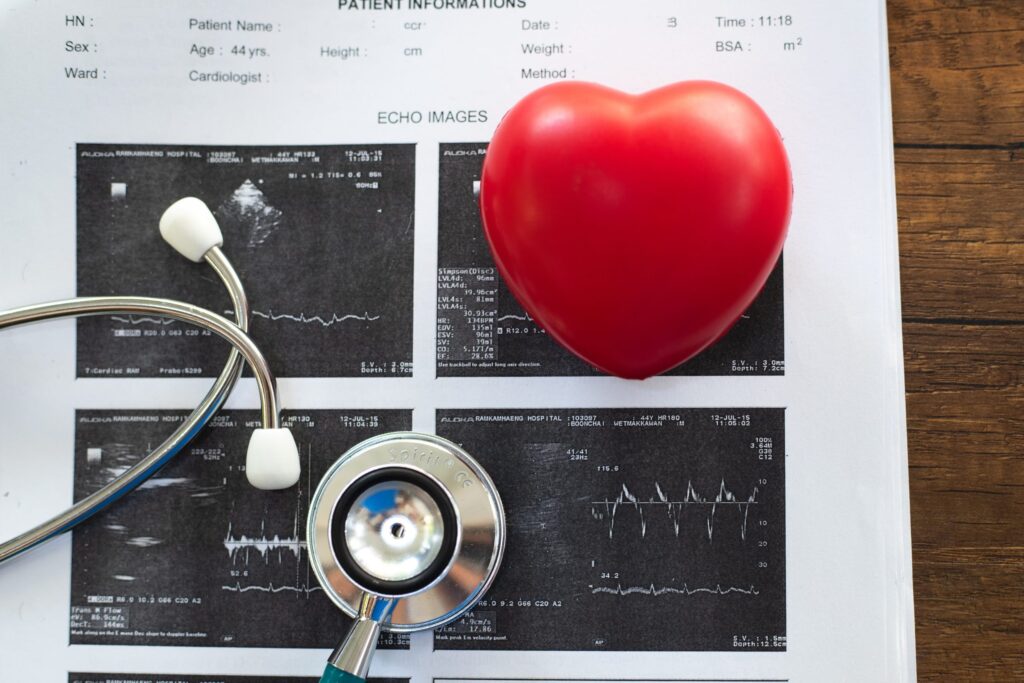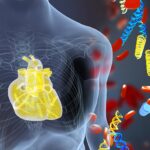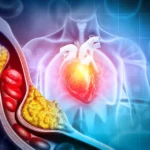Cardiogenic shock is a life-threatening condition characterized by the heart’s inability to pump enough blood to meet the body’s needs. Often a complication of severe heart conditions such as myocardial infarction, it is marked by critically low cardiac output and systemic hypoperfusion. Early recognition and prompt management are crucial to improving patient outcomes.

Pathophysiology of Cardiogenic Shock
Cardiogenic shock results from severe myocardial dysfunction, which compromises cardiac output and leads to inadequate tissue perfusion. The main mechanisms include:
- Systolic dysfunction: Impaired ventricular contraction reduces ejection fraction.
- Diastolic dysfunction: Reduced ventricular filling limits stroke volume.
- Valvular dysfunction: Acute valve disorders, such as mitral regurgitation, exacerbate hemodynamic instability.
- Obstruction: Conditions like ventricular septal rupture impede effective circulation.
The reduced perfusion triggers compensatory mechanisms, including systemic vasoconstriction and fluid retention, which can worsen the underlying condition.
Causes of Cardiogenic Shock
The primary etiologies include:
- Acute Myocardial Infarction (AMI):
- The leading cause, accounting for up to 80% of cases.
- Myocardial ischemia leads to extensive necrosis, impairing contractility.
- Arrhythmias:
- Severe bradycardia or tachycardia disrupts effective cardiac output.
- Structural Cardiac Issues:
- Acute mitral regurgitation or ventricular septal defect.
- Left ventricular outflow obstruction.
- Cardiomyopathies:
- Advanced dilated or hypertrophic cardiomyopathy.
- Other Causes:
- Myocarditis, end-stage heart failure, or cardiac tamponade.
Clinical Presentation
Symptoms
Patients with cardiogenic shock typically exhibit:
- Severe dyspnea and tachypnea.
- Chest pain, particularly in cases related to AMI.
- Profound fatigue and altered mental status.
Signs
Key clinical findings include:
- Hypotension (systolic blood pressure <90 mmHg).
- Cold, clammy extremities due to vasoconstriction.
- Elevated jugular venous pressure (JVP).
- Oliguria or anuria indicating renal hypoperfusion.
Diagnostic Approach
A thorough evaluation involves clinical assessment, laboratory tests, and imaging studies:
Laboratory Tests
- Cardiac biomarkers: Troponin, CK-MB for myocardial injury.
- Lactate levels: Indicate tissue hypoxia.
- Arterial blood gases (ABGs): Assess metabolic acidosis and oxygenation.
Imaging Studies
- Echocardiography:
- Essential for evaluating ventricular function and identifying structural abnormalities.
- Chest X-ray:
- Detects pulmonary congestion or cardiomegaly.
- Coronary Angiography:
- Identifies ischemic causes and guides revascularization.
Hemodynamic Monitoring
- Pulmonary artery catheterization provides detailed insights into cardiac output, systemic vascular resistance, and pulmonary capillary wedge pressure (PCWP).
Management of Cardiogenic Shock
Initial Stabilization
- Airway and Breathing:
- Ensure oxygenation through supplemental oxygen or mechanical ventilation.
- Hemodynamic Support:
- Administer intravenous fluids cautiously to optimize preload.
- Use inotropes like dobutamine to enhance contractility.
- Vasopressors such as norepinephrine may be required to maintain blood pressure.
Definitive Treatment
- Revascularization:
- Percutaneous coronary intervention (PCI) or coronary artery bypass grafting (CABG) for AMI-related cases.
- Mechanical Circulatory Support:
- Intra-aortic balloon pump (IABP) or extracorporeal membrane oxygenation (ECMO) for refractory shock.
- Surgical Interventions:
- Corrective procedures for structural abnormalities, such as valve repair or septal defect closure.
Prognosis and Long-Term Care
The prognosis depends on the underlying cause, timely intervention, and the patient’s overall health. Strategies for improving outcomes include:
- Early revascularization in ischemic cases.
- Multidisciplinary care, including cardiologists and intensivists.
- Patient education on recognizing early symptoms of heart failure or ischemia.

